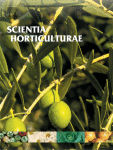View Item
- xmlui.general.dspace_homeCentros Regionales y EEAsCentro Regional Mendoza - San JuanEEA San JuanArtículos científicosxmlui.ArtifactBrowser.ItemViewer.trail
- DSpace Home
- Centros Regionales y EEAs
- Centro Regional Mendoza - San Juan
- EEA San Juan
- Artículos científicos
- View Item
Effect of shading in different periods from flowering to maturity on the fatty acid and phenolic composition of olive oil (cv. Arbequina)
Abstract
In olive there is insufficient information about how radiation changes throughout different growing periods affect oil quality. The present three-season study was conducted on an 'Arbequina' orchard. In addition to control trees without shading (WS), four other treatments were applied to reduce solar radiation penetration to 50%: continuous shading throughout the experimental period (TS), shading from budbreak to fruit set (S1), from fruit set to pit
[ver mas...]
In olive there is insufficient information about how radiation changes throughout different growing periods affect oil quality. The present three-season study was conducted on an 'Arbequina' orchard. In addition to control trees without shading (WS), four other treatments were applied to reduce solar radiation penetration to 50%: continuous shading throughout the experimental period (TS), shading from budbreak to fruit set (S1), from fruit set to pit hardening (S2), and from pit hardening to budbreak in the following season (S3). Shaded tree fruits from pit hardening to harvest had a lower maturity index and higher fruit production than the rest of the shading treatments. Free acidity and peroxide indexes were higher in S2 than in WS. Oleic acid was highest in oil from TS. Higher oleic acid content was found in S1 and S2 compared to S3 and WS. Linoleic and linolenic acids showed an inverse pattern to oleic acid. Phenol content was affected by reduced radiation in S2. Radiation reduction immediately after pit hardening was critical on fruit maturity, and indirectly, on the fatty acid and polyphenol content profile. Orchard design and subsequent canopy management should focus on improving canopy illumination during S1 and S2 where shading reduced both fruit production and oil quality. Shading in S3 markedly reduced oil quality but not fruit production.
[Cerrar]

Fuente
Scientia Horticulturae 240 : 162-169 (October 2018)
Date
2018-10
ISSN
0304-4238
Formato
pdf
Tipo de documento
artículo
Palabras Claves
Derechos de acceso
Restringido
 Excepto donde se diga explicitamente, este item se publica bajo la siguiente descripción: Creative Commons Attribution-NonCommercial-ShareAlike 2.5 Unported (CC BY-NC-SA 2.5)
Excepto donde se diga explicitamente, este item se publica bajo la siguiente descripción: Creative Commons Attribution-NonCommercial-ShareAlike 2.5 Unported (CC BY-NC-SA 2.5)

